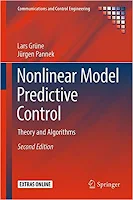Improving Water Quality Through Contaminant Source Trackdown Studies
 Laurel J. Standley ... 300 pages - Publisher: IWA Publishing; (July, 2016) - Language: English - ISBN-10: 1780407084 - ISBN-13: 978-1780407081.
Laurel J. Standley ... 300 pages - Publisher: IWA Publishing; (July, 2016) - Language: English - ISBN-10: 1780407084 - ISBN-13: 978-1780407081.Improving Water Quality Through Contaminant Source Trackdown Studiesdiscusses the trackdown approaches that help to avoid costly mistakes that miss key contaminant sources or inaccurately assess their relative contributions to problems. This book brings together information that is currently dispersed in the academic literature and within files of agencies and consultants into one valuable resource. This book provides water managers and other water professionals with the tools they need to assess and track key sources of contamination in ground and surface water resources, as well as effluent distribution systems. Specific examples and case studies that focus on contaminants that frequently impair water quality are included to provide readers with real world examples on how to conduct contaminant trackdown studies. It does not cover mathematical model development techniques in detail but lists model types and resources where more information on these techniques can be obtained. Improving Water Quality Through Contaminant Source Trackdown Studies provides: an in-depth examination of problems that can be approached using contaminant source trackdown studies. methods for identifying and tracking critical point and nonpoint, surface and ground water sources of contaminants such as such as wastewater treatment plants, agricultural and urban runoff, and contaminated sediments. practical and realistic tools for saving time and money by using contaminant source trackdown studies to tackle impaired water scenarios ranging from small-scale systems, such as lakes, to complex watersheds and municipal distribution systems. international examples and case studies with real-world experience in conducting a contaminant trackdown study. The book is a valuable resource for water professionals in environmental science, chemistry, biology, and engineering.


















